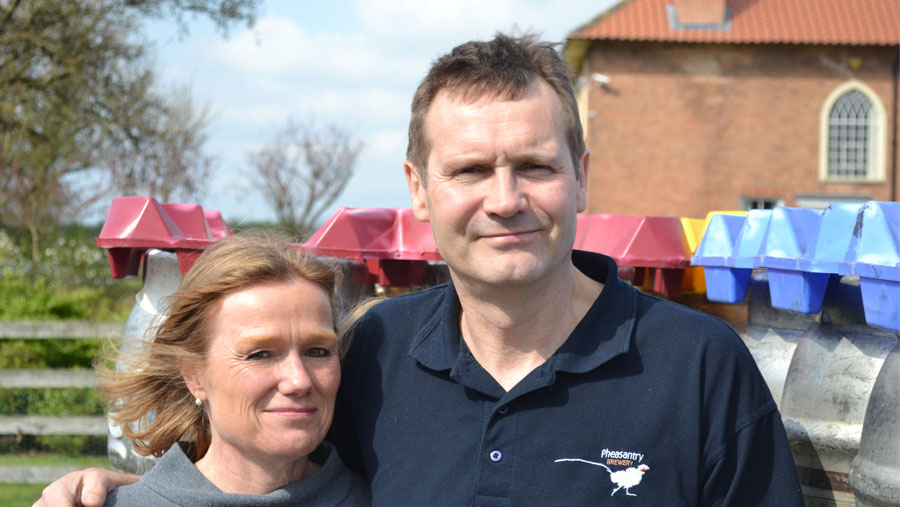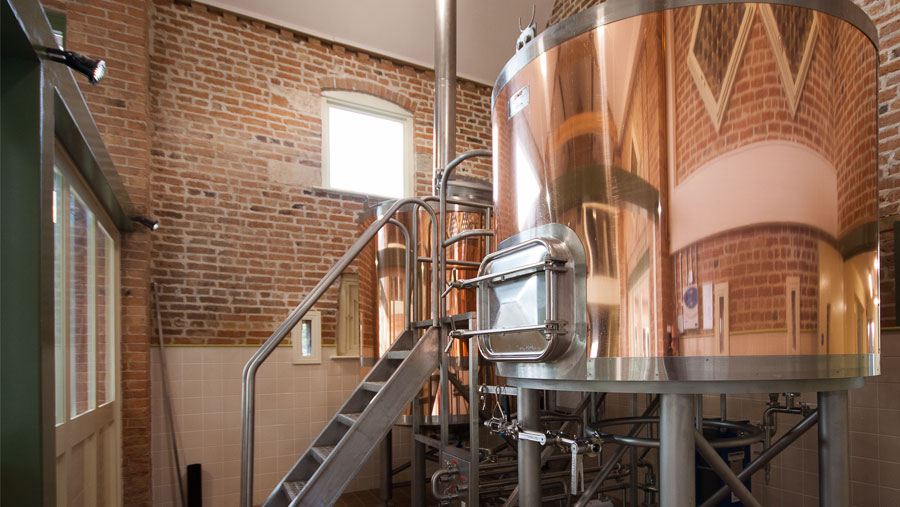The secret to a successful diversification
 Mary and Mark Easterbrook, owners of the Pheasant Brewery
Mary and Mark Easterbrook, owners of the Pheasant Brewery What’s the secret to successful diversification?
According to DEFRA, nearly two-thirds of farmers have diversified to create additional streams of income, representing approximately £620m in extra cash every year.
Success is not guaranteed, however. One farming family in Nottinghamshire managed to diversify successfully and create their own microbrewery – a journey requiring clever decisions, the right tools, and a lot of hard work.
In 2008, Joseph Camm Farms Ltd bought High Brecks Farm at East Markham in Nottinghamshire.
The property included several derelict buildings – which Mary Easterbrook quickly realised offered an opportunity for diversification.
We knew they had a lot of potential,” she says. “We wanted a business related to food or drink because that felt allied to farming, plus my husband, Mark, had worked in the food industry for 20 years so that was where his interests and skills were.”
As a family, the Easterbrooks had always grown malting barley.
This, combined with Mark’s food industry experience and the sharp rise of consumer interest in craft beer and microbreweries, lent itself to the Easterbrook’s idea for a new business: a brewery, using the farm’s own malted barley.
In 2012, the Easterbrooks launched the Pheasantry Brewery, named after the cottage adjoining the brewery which was once used to breed and rear pheasants for sport.
They now brew a range of traditional ales and bitters and have even gone on to win the CAMRA ‘Champion Bitter of Britain’ award in 2015.
The right tools
Managing one business is challenging. Two can often be overwhelming. Luckily, Mary has form in this area, having worked for many years as a chartered accountant.
To stay on track with every aspect of the new business, Mary highlights the use of specialist software – especially for keeping track of both businesses at the same time.
The biggest synergy between the two has been our software system,” says Mary. “We use Farmplan’s Gatekeeper software for our arable enterprises, but Farmplan’s Business Manager is ideal for both the farm and the brewery.
“The farm has a small number of big customers, whereas the brewery has lots of smaller customers. We can be generating 30 invoices a day, so it’s a great way of keeping an at-a-glance track of the different customers and the different prices.
“The two different datasets are then amalgamated for the monthly VAT returns and the annual accounts.”

Pheasantry-brewery
Pheasantry Brewery success
Pheasantry is a success: 12,000 pints are produced every week, distributed to hundreds of pubs within a 30-mile radius.
“We’re very lucky in terms of where we are, as we have great access to a big population,” says Mary. “Quality is absolutely vital,” adds Mary.
“For the past four years, we’ve employed a full-time brewer – he’s been doing it for 30 years and his father was a brewer so he’s immensely experienced.”
Pheasantry have been careful to stick close to their brand philosophy: producing quality beer with traditional methods.
Although they occasionally offer a range of specials, they stick to their core offering of quality bitters and ales, made from malted barley, yeast, hops and water.
This is mirrored by their beer names. All their beers are simple and describe the beer itself. For example, their pale ale is quite simply named… Pale Ale.
Mary is proud to be continuing her family tradition, started by her grandfather in 1916: “He began farming in Babworth,” says Mary.
“I’m so proud that everything he achieved, which was continued and expanded by my parents is still a family farming business today, with my sister, Ruth Girdham, and myself responsible for day-to-day operations.”
Diversification can often be a daunting prospect, and while it’s true that the Pheasantry venture has worked out well for Joseph Camm Farms, many fare less well.
So, why consider diversification for your farm business? The rewards can be worth it. Diversification lets farm businesses supplement their income or bolster the main farming business.
Mark sums it up well: “More and more farms are considering diversification. Like all farmers, we’re trying to work out how to cope with the potential new world we face.”
How to make a success out of diversification
We asked Piers Costley, Director at Farmplan, provider of market-leading software and digital solutions for farms and rural businesses, some quick questions for advice on successful diversification.
What’s the first step?
Before considering diversification, farms should make sure their principal farm business is robust and able to survive loss in time and resources required when creating another business.
What other things are worth considering at the early stages?
Diversification can be overwhelming at first. For example, do you create your new business within your existing structure or set up a new company?
For every option, work out the implications – business rates, planning permission, and licensing for example. A smart move is to seek expert advice before going full throttle.
Should I draft my own business plan or seek expert help?
Investors and banks might request to see forecasts for the next three to five years. Drafting your own business plan is a smart move.
External help can be sought, but who knows your business better than you?
Regardless of who ultimately does it, it’s worth writing your own plan– it lets you recognise your own strengths and weaknesses well in advance, and you can set benchmarks to measure success.
What software and digital tools should I use?
Don’t let software make diversification harder than it should be. You might be able to add another business into your existing software package. If not, alternatives are available.
The last thing you want is to run two separate pieces of software – each with their own formats and architecture – that don’t talk to each other.
Sometimes different datasets are necessary when running more than one business, but there are solutions which can draw those together for greater convenience and efficiency.
How do I measure success?
Success looks different for everyone. It’s a question worth asking yourself in advance. Do you want to generate a certain level of passive income? Is the aim to gradually free up more time to spend with your family?
Have a clear vision of what you want to achieve and set out a plan to achieve it. Consider what success would look like to you, and then set a timeframe – perhaps every year or six months – to measure your progress and decide the next steps.
